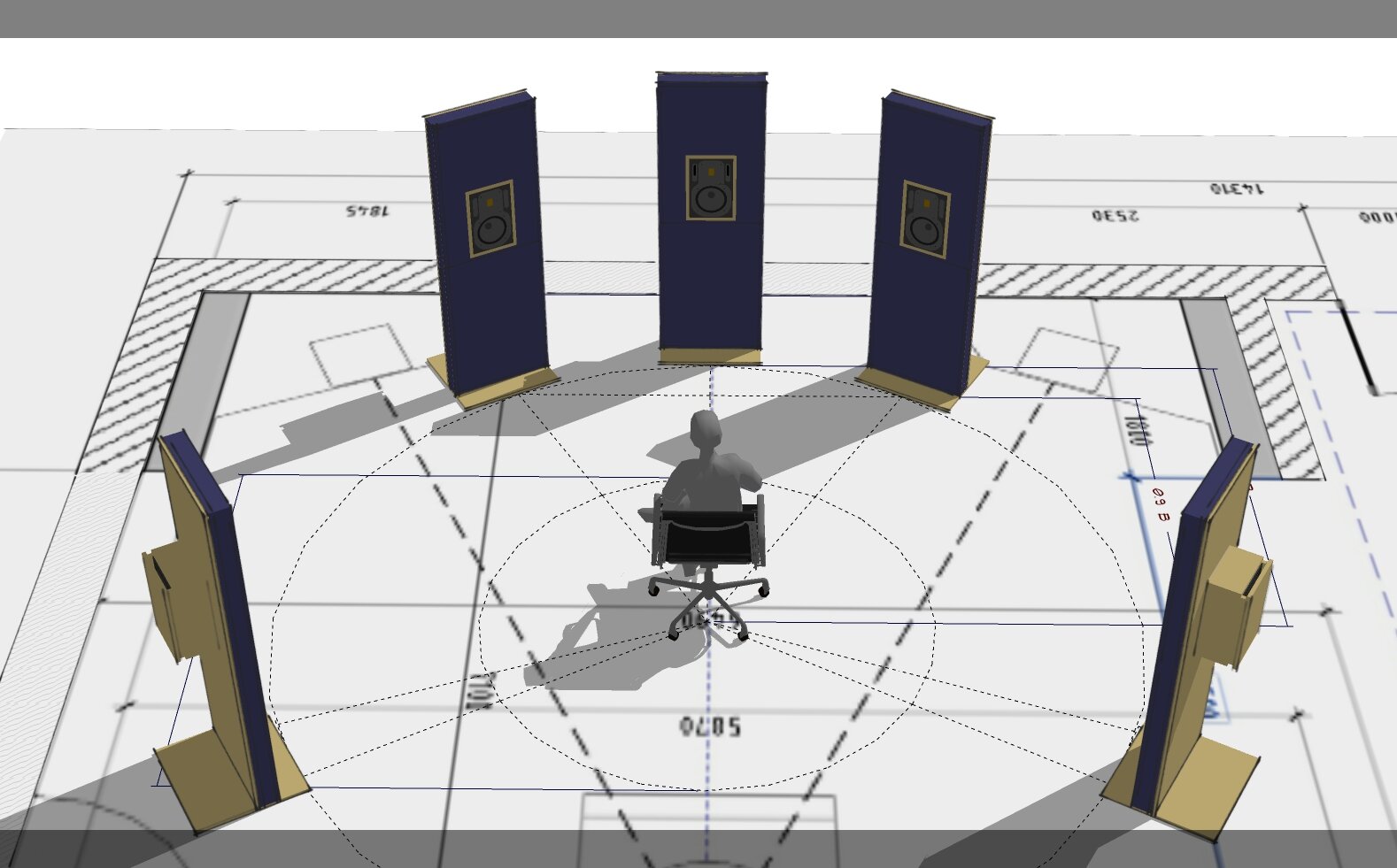-
Posts
2,297 -
Joined
-
Last visited
Everything posted by Glenn Stanton
-
looks like my '61 Les Paul Deluxe is going to worth a lot, oh wait. never mind.... ?
-
this is almost worse than when Computer Associates acquires something... "where great ideas go to die"...
-
maybe just keep them in a PowerPoint in your project folder, or a Google Slides named as your project and keep one slide per revision (or some other ordering thing). this way you can easily reference them in another window on your PC or even your mobile device, as well as readily revisit settings for projects without having to actually open the project. it's a bit more work but my be a more effective solution once you get into a habit of using it. i keep photos in my Google photos under an album "0000 HW settings" and this way i can readily access them - but only if i'm connected... my option (if needed) would be to Create a Slides presentation and export it as PPT to my local disk so i can go offline.
-
@Harley Dear as a quick note - you might investigate the Session Drummer 3. when reviewing some of my older projects, i'd forgotten i used it for a lot of percussion as well as drums, and when i checked the PRV, it was all nicely laid out as if using a drum map, but it wasn't. there are 12 assignable stereo output. audio is based on WAV samples. tuning each instrument is an option as well as "width". you'd have to check out the latency between MIDI and sound, but it seemed ok to me. SS_OldZep.cwt
-
one of my oldest songs from the mid-80s - parents keep an eye on your kids and don't do drugs! or something like that ?
-
there's a limit to the testing that can be done without some loopback on the USB port(s). there is one from Microsoft https://docs.microsoft.com/en-us/windows-hardware/drivers/usbcon/microsoft-usb-test-tool--mutt--devices but it requires loopbacks. the same for PassMark etc. otherwise it seems like most tests are skewed to disk performance. not sure if someone clever wrote a USB test using a audio interface as a loopback, although the REW app does use for defining the IO hardware baseline calibration. in general, LatencyMon is the utility most likely to identify an issue and perhaps, unchecking hardware acceleration on the IO could help (if it has HW acceleration...).
-
latency - it's a combination of the drum synth taking take to output the audio based on the MIDI input, and the audio roundtrip between the software outputting it via your sound device and you hearing it, reacting via your guitar, and the audio path + any effects you might use (an amp sim for example). so several options: 1) render the audio on the drums and turn off the synth. 2) turn off as many effects and other tracks as possible while recording, 3) turn down the sample buffer on your sound device. if you're round trip is under 5ms you'll probably be ok, however, you may still need to tweak the recorded audio tracks. i use the "nudge" setting @ 2ms per nudge to quickly align the start of the recorded audio.
- 1 reply
-
- 1
-

-

What are you using for percussion ( other than drums )
Glenn Stanton replied to Harley Dear's topic in Cakewalk by BandLab
Addictive Drums 2 Session Percussion, a number of old soundfonts via sforzando, and recently i (re)found Session Drummer 3 packages include some decent hand percussion readily accessed via the PRV. for synth percussion sounds - Z3TA+2 simply rocks. -
so, the quick answer is simple: calibrate your monitoring across your recording and playing equipment. 1) load up a band-pass pink noise WAV (not MP3) running -20db (you'll find a bunch online) 2) load that into a track in Cakewalk and loop it @ 0db on the sound card output 2a) adjust Windows and speaker settings as needed to get the levels (read up on gain staging if you need to) 3) adjust your loudest monitoring setting on your speakers so you're at 83db at your listening position (i recommend a proper sound level meter but many phone apps seem to be ok for general usage) repeat steps 2 & 3 with each audio player with all FX turned off and adjust players to get same level as CbB. if you're using separate audio interfaces, make sure you adjust the volume level at each interface on your Windows sound control panel and not the record/mix software ? for example, in my Windows sound card settings i have my UMC1820 set at 100%, my IO2 @ 98%, my RealTek at 80%, and fiber to 5.1 @ 70%. in my speaker controller output settings - SP-5 and Avantone @ 75% (3 o'clock on the pots) and 50% on the speakers themselves (12 o'clock) , and Bose 901 eq/amp @ 60%. 901 amp at 50% (12 o'clock ~250W/ch) ***if you have a speaker controller - check frequency and set sub crossover correctly with the speaker sets. example: my 2310 x-over set for 90hz crossover, parametric EQ set for Bose 901 series 1 simulation, and on the sub crossover dial is set @ 90hz with a slight 2-3db EQ bump @ 150hz (due to a room mode at my listening position so this flattens it for me) -- this yields an even (+/- 1db) 83db (at my listening position as measured by a digital sound level meter) at max volume (0db) for all my recording, editing, playing software. generally i listen at the 1/2 volume setting on the controller or around 75db. ----the exception are a pair of old beatup Fisher speakers run off the 5.1 amp (150W/ch) set along the instrument (guitars, bass, etc) amp wall for simply raw, don't care, translation testing, and general party level music @ 105-110db @ 2m.
-
like, adding chords over the lyrics in the lyrics view? if you paste the lyrics into the lyric view on a MIDI track, each vertical line is a word. so i suppose you could then (possibly using snap-to) put in chords via a keyboard (e.g. step-recorder). or are you think more like something like displaying it in the Staff view and adding chords via the Chord tool and adjusting to "C7" "Am7" etc... in the latter, it's really chords based on sections of a measure determined by snap-to. and lyric will be displayed in the base meter until you add the melody notes to each word etc. however, the chords don't seem to generate any MIDI to actually play them except in the chord dialog box... so using the step recorder to create the actual chords would still be needed.
-
gotcha, sort of an auto-flow mapper showing how all the tracks and busses are flowing. the OP example looks like some of the virtual patch synths and effects module generating type. it would be handy to see an overall map of how all the tracks, patch points, sends, busses, aux tracks, external plugs, and IO are flowing - for training, troubleshooting, or perhaps optimizing. i wonder if the CbB API could be used to generate something like a data dump => extract all the connections, then imported in the drawing program, layout a bunch of labelled boxes and lines showing the flow from source to output...
-

Is a universal tempo change possible in a large project?
Glenn Stanton replied to musikman1's topic in Cakewalk by BandLab
maybe make a copy of the song project into a separate folder before doing the multiple track stretching... even with undo, it may be much less heartache if something goes wrong... to wit: Murphy's Law... if most of the tracks in my project were MIDI and i need to change tempo, then i'd update the tempo and re-render the MIDI, and then time-stretch only the recorded parts using Melodyne or the built-in time-stretching. but i'd only do that with a new version of the project file saved into it's own folder to avoid buyers remorse later... -

Serious newbie trying to figure out how to make a song...
Glenn Stanton replied to Ruby Gold's topic in Cakewalk by BandLab
check the Yamaha site for your specific model. there is a "Yamaha Steinberg USB Driver V2.0.4" which seems to work for a number of their older and less expensive keyboards. i have an old LK-90 Casio which actually uses a driver like this as well... you install the driver, then plugin your keyboard. in CbB go to your preferences and under MIDI you should see "a keyboard" listed which may be the driver name of the actual model. -
http://www.cakewalk.com/Documentation?product=Cakewalk&language=3&help=Mixing.07.html
-
yeah, if you have access to Session Drummer 3 it's definitely nicer than the SI-Drums. i'm re-invigorating it on my sysmtem as i have some older projects that i want to remix a bit but keep the session drums i had in place. i forgot that you can set it up somewhat like AD 2 and it also labels the notes in the PRV without having to make a drum map...
-
thanks @Lynn Wilson. i did tweak it a bit today with some fixes to the vocals and levels. it's basically an Em blues starting in the Am ?
-
maybe the note snapping is set to too fine a resolution - if both snap and step are set to quarter notes, does this still happen? is it project specific? i.e. if you create a brand new blank project, add a MIDI track then use the step recorder does it still happen?
-

Analog Lab V tracks do NOT produce any sound
Glenn Stanton replied to Simile Smile's question in Q&A
i had a problem with the Labs Lite for the B-3 and Vox organ - turns out i needed to set my controller (Keystation 49) to MIDI channel 1 and then all worked. so just check and see if there are sounds via the virtual keyboard and/or your computer keys, and if so, then it may be a similar issue.- 3 replies
-
- analog lab v
- no sound
-
(and 3 more)
Tagged with:
-
one of those nice bedtime songs for my children to help them go to sleep...
-
the fuzz - i'm not sure, it may have been a combination of Sonitus saturation and some free VST. my goal was to get to some Santana level of distortion...
-
thanks, actually it's old project that i did back in early 2000's before i discovered the joys of auto-tuning ? but once i get re-assembled it's one of those numbers i want to update a bit including the vocal.
-
one of those upbeat songs about getting dumped.
-

Spitfire BBCSO Template for CbB
Glenn Stanton replied to Matthew Sorrels's topic in Instruments & Effects
this may help: Buy Logic Pro X Articulation Sets - Babylonwaves Art Conductor - 6300 Templates for your Orchestra https://www.babylonwaves.com/free/ -

Get Arturia's Analog Lab Lite for free at SoundBetter
Glenn Stanton replied to alex satt's topic in Deals
downloaded and installed but for some reason the B-3 and the Vox organ won't respond to my midi controller (Keystation 49) - i can see the Lab virtual keyboard keys reacting as i play, but no audio. all other synths, pianos, farfisa organ, etc work as expected. the pitch and mod wheels work... no obvious configuration setting on those two instruments... by dragging my mouse across the Lab virtual keys i get B-3 & vox sounds, and in standalone app, i can even use my computer keyboard... but nothing from midi keyboard for those 2 organs... anyone else experiencing this? SOLVED - the B-3 and Vox require my Keystation 49 to be set the channel 1, all other keys responded without explicitly setting it...




